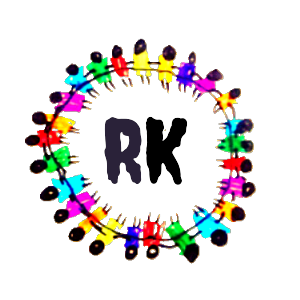Learning HTML and CSS effectively involves a structured approach that builds from basic to advanced concepts. Here’s a comprehensive outline to guide your learning journey:
1. Introduction to HTML and CSS
- Overview of HTML: Learn about HTML’s history, its purpose, and basic structure.
- Overview of CSS: Understand the role of CSS in web design and how it complements HTML.
- Setting Up: Tools and environments needed for HTML/CSS development (text editors like VSCode, Atom, or Sublime Text).
2. Basic HTML
- HTML Syntax: Understanding HTML elements, tags, and attributes.
- Basic Tags:
<!DOCTYPE html>,<html>,<head>,<title>,<body>. - Text Elements:
<h1>to<h6>,<p>,<span>,<strong>,<em>. - Lists: Ordered lists (
<ol>), unordered lists (<ul>), and list items (<li>). - Links and Images:
<a>for hyperlinks,<img>for images, and their attributes.
3. Intermediate HTML
- Tables: Creating tables with
<table>,<tr>,<td>,<th>, and table attributes. - Forms: Building forms with
<form>,<input>,<label>,<textarea>,<select>,<option>, and form attributes. - Semantic HTML: Using semantic tags like
<header>,<footer>,<article>,<section>,<nav>,<aside>. - Media Elements: Embedding audio (
<audio>) and video (<video>), and using the<iframe>tag.
4. Basic CSS
- CSS Syntax: Understanding selectors, properties, and values.
- Applying CSS: Inline styles, internal stylesheets, and external stylesheets.
- Basic Selectors: Type, class, and ID selectors.
- Color and Background: Setting text color, background color, and background images.
- Text Styling: Fonts, font size, font weight, line height, text alignment, text decoration.
5. Intermediate CSS
- Box Model: Understanding content, padding, border, and margin.
- Layout Techniques: Using
displayproperty (block, inline, inline-block, none). - Positioning: Static, relative, absolute, fixed, and sticky positioning.
- Flexbox: Using flexbox for layout, understanding
flex-containerandflex-items, properties likejustify-content,align-items,flex-grow,flex-shrink,flex-basis. - CSS Grid: Basics of CSS Grid layout, defining grid containers and items, properties like
grid-template-columns,grid-template-rows,grid-area,gap.
6. Advanced HTML
- Forms and Validation: Advanced form elements and attributes, form validation with HTML5.
- ARIA: Introduction to Accessible Rich Internet Applications (ARIA) for improving web accessibility.
- Custom Data Attributes: Using
data-*attributes for embedding custom data.
7. Advanced CSS
- Transitions and Animations: Creating smooth transitions and keyframe animations.
- Transforms: 2D and 3D transforms (
rotate,scale,translate,skew). - Responsive Design: Media queries, responsive units (%, em, rem, vw, vh), mobile-first design.
- CSS Frameworks: Introduction to CSS frameworks like Bootstrap, Foundation, and Bulma.
8. Web Typography
- Web Fonts: Using web fonts, Google Fonts.
- Font Face Rule: Using
@font-faceto include custom fonts. - Text Effects: Text shadows, text gradients, and advanced text styling.
9. Best Practices and Optimization
- Code Organization: Structuring HTML and CSS for maintainability.
- Performance: Minimizing and compressing CSS, using CSS preprocessors (Sass, Less).
- Accessibility: Ensuring your HTML/CSS follows accessibility standards (WCAG).
10. Tools and Workflow
- Version Control: Using Git and GitHub for version control.
- Build Tools: Introduction to build tools like Gulp, Grunt, and task runners.
- CSS Preprocessors: Using Sass or Less for more efficient CSS.
11. Advanced Topics
- CSS Variables: Using CSS custom properties (variables).
- Advanced Selectors: Pseudo-classes (
:hover,:focus,:nth-child), pseudo-elements (::before,::after). - Grid and Flexbox: Advanced layouts combining CSS Grid and Flexbox.
12. Project-Based Learning
- Simple Projects: Start with small projects like personal blogs, portfolios, or landing pages.
- Incremental Complexity: Move on to more complex projects like e-commerce sites, web applications, or interactive dashboards.
13. Continuous Learning
- Community Engagement: Join HTML/CSS communities on Stack Overflow, Reddit, or Discord.
- Stay Updated: Follow HTML/CSS-related blogs, podcasts, and news.
- Advanced Resources: Read advanced books and tutorials, such as “CSS Secrets” by Lea Verou and “HTML & CSS: Design and Build Websites” by Jon Duckett.
By following this outline, you’ll build a solid foundation in HTML and CSS and progressively advance your skills through practical application and continuous learning.
